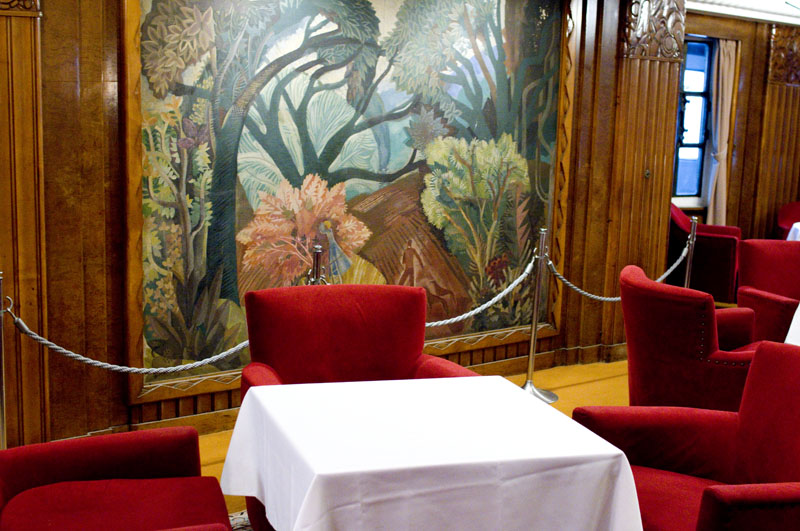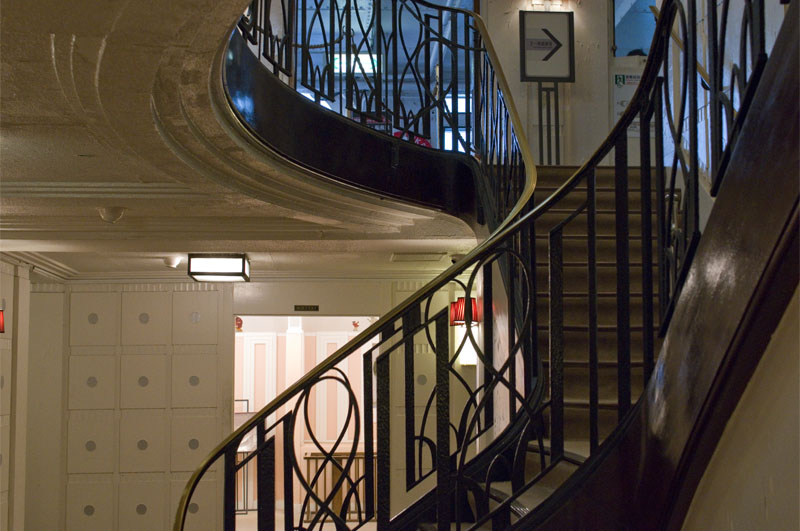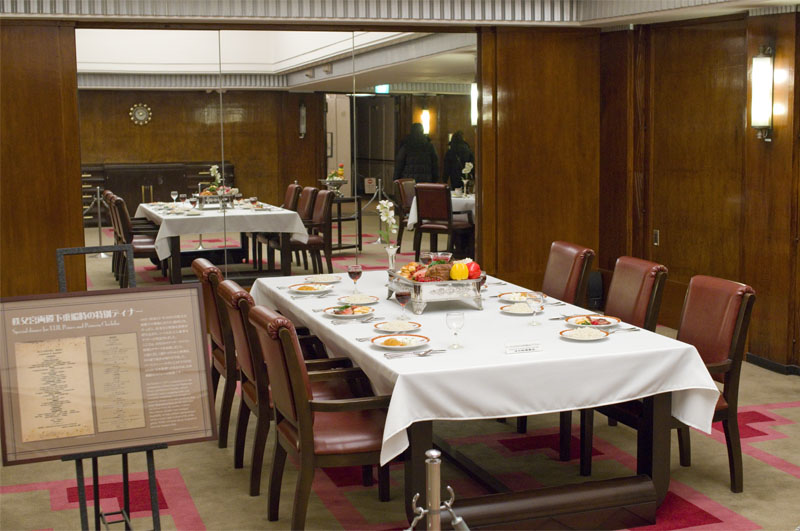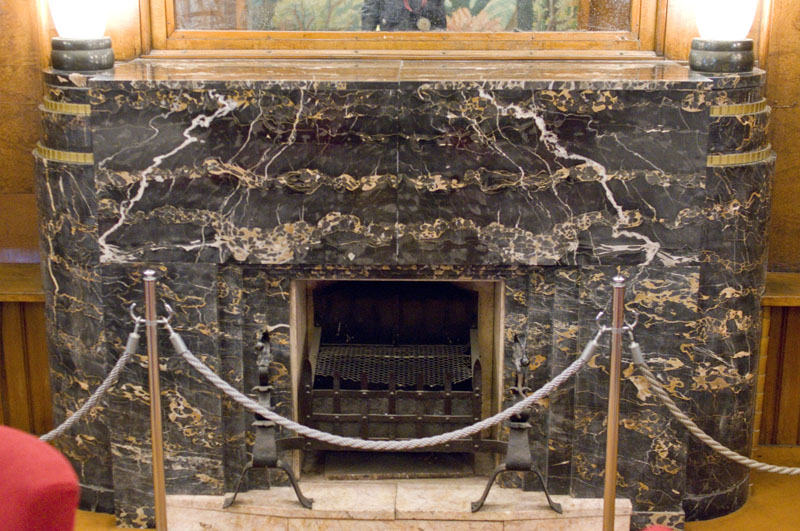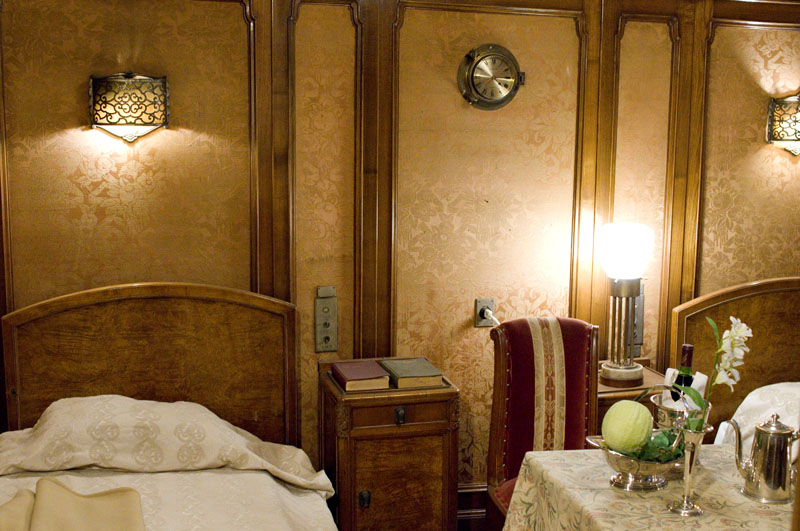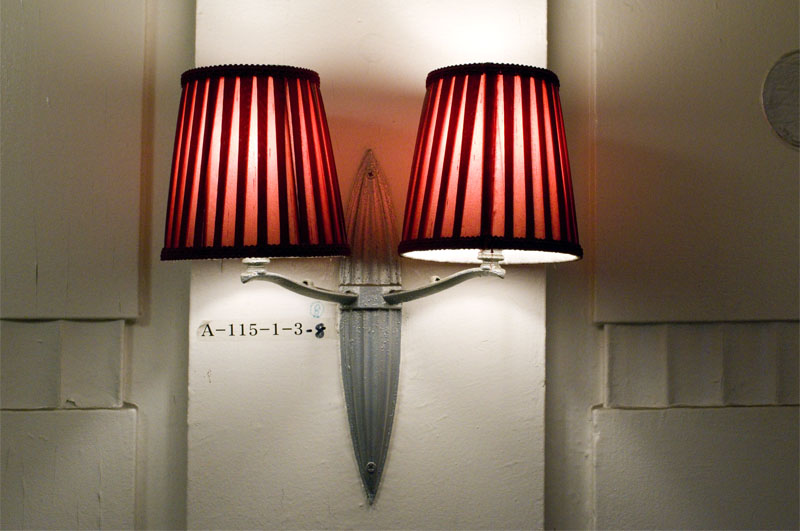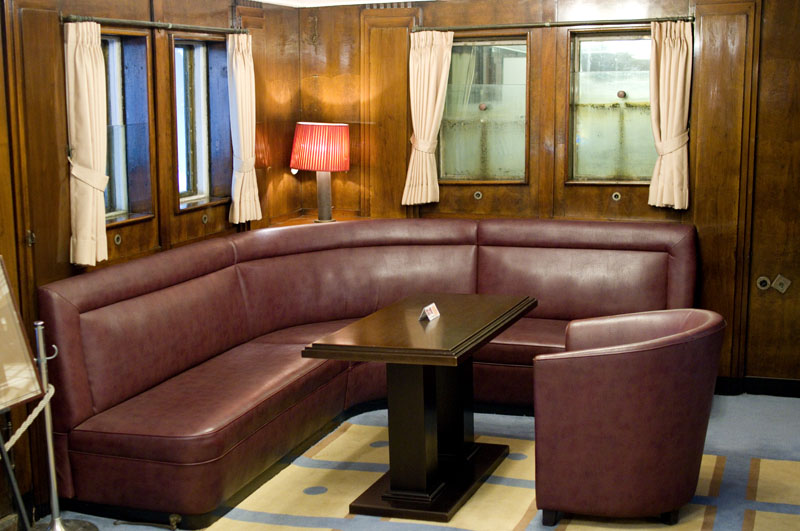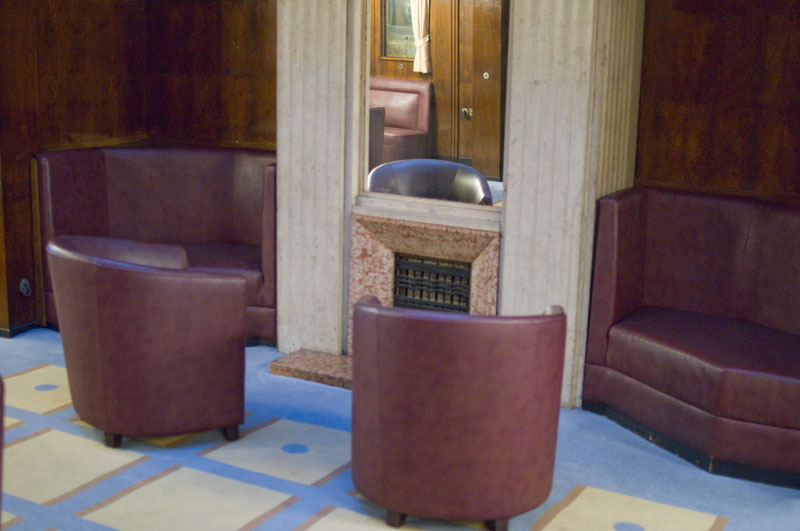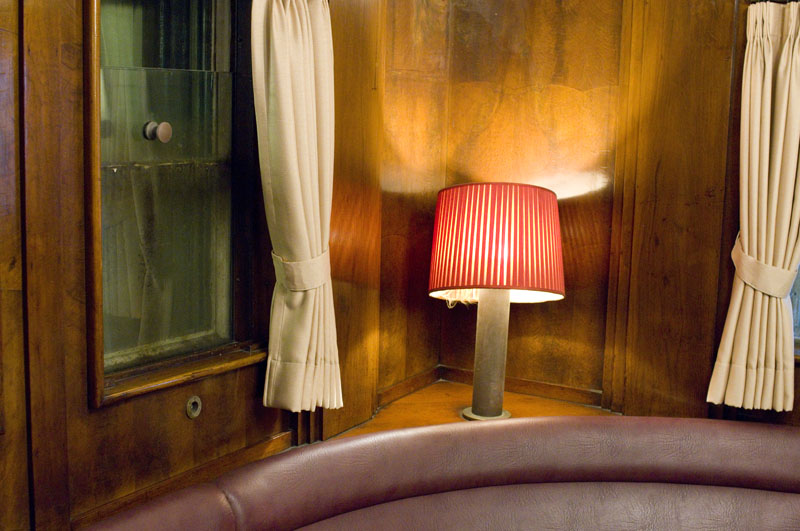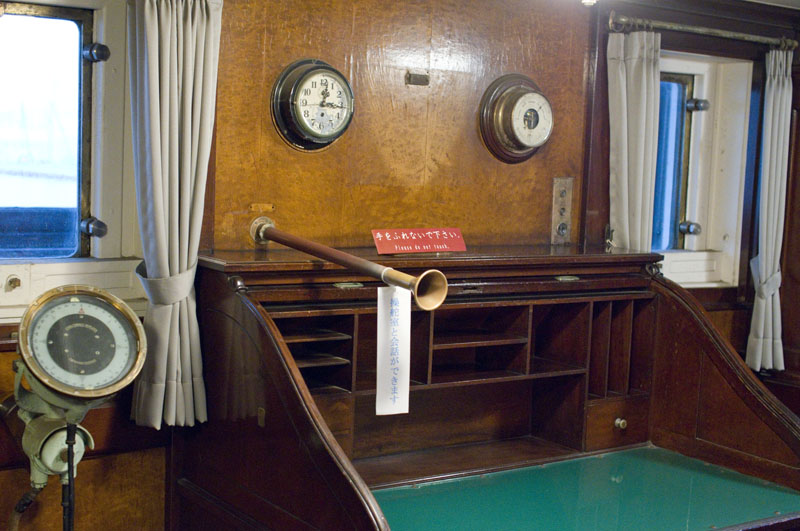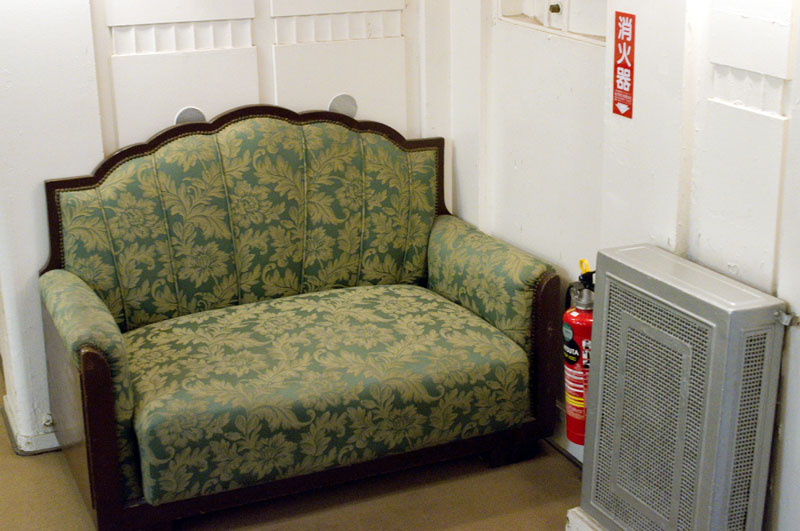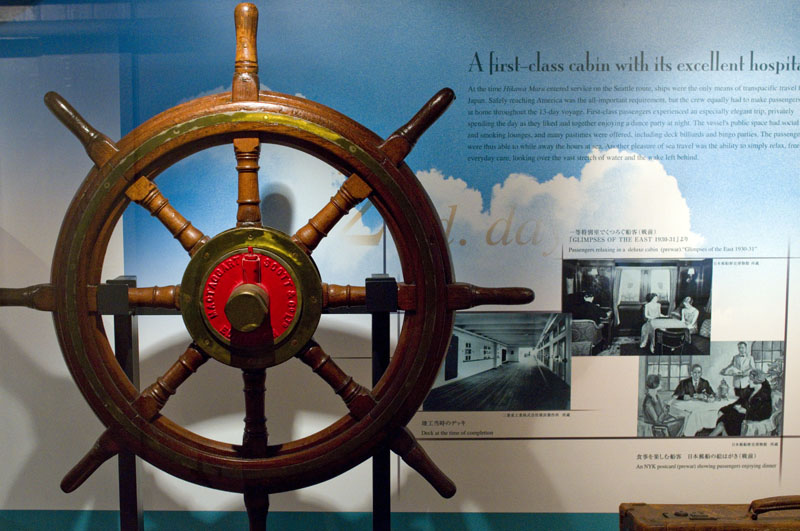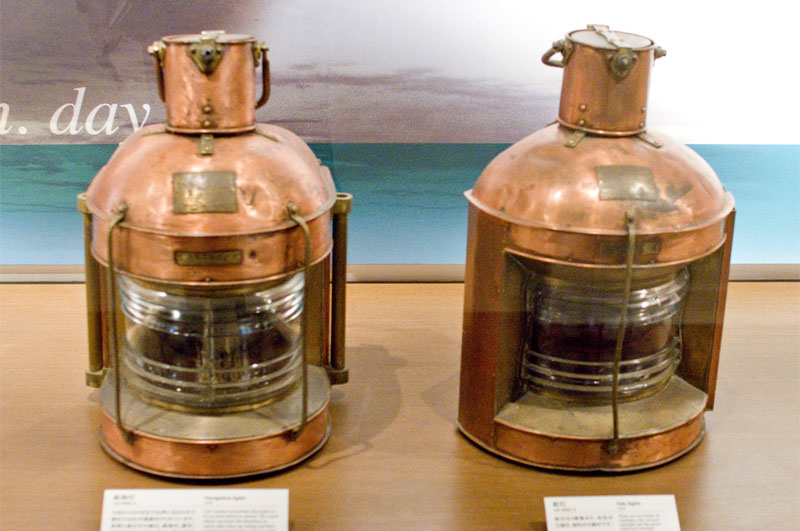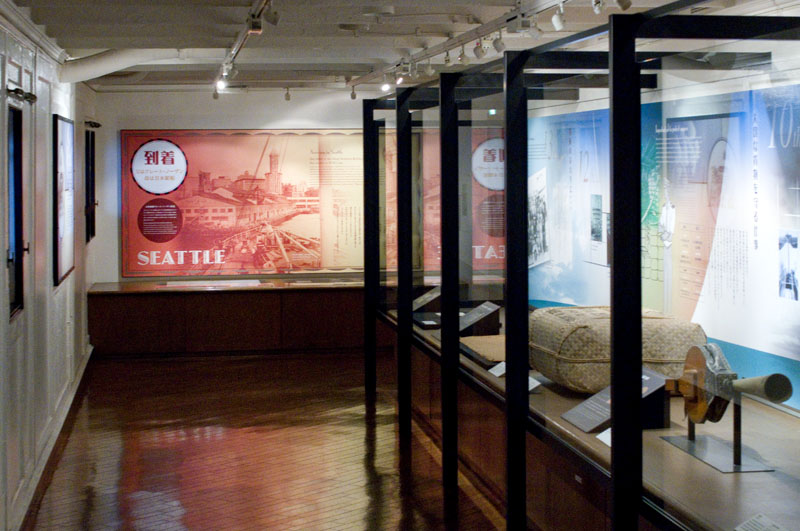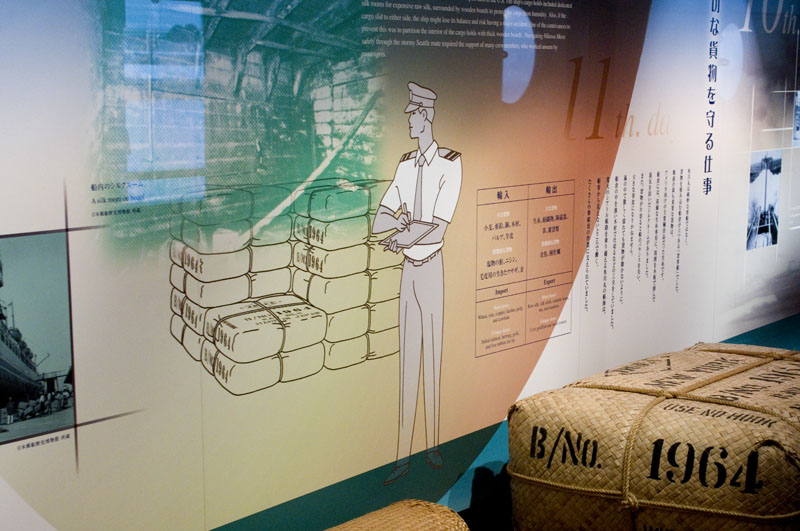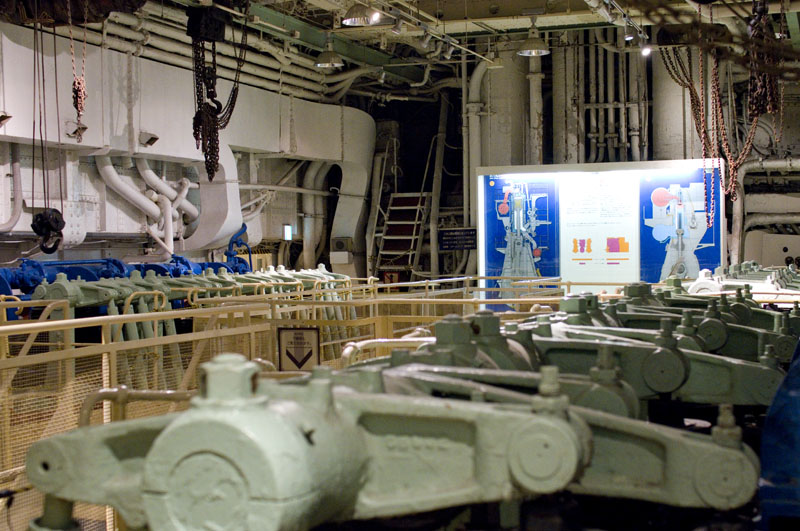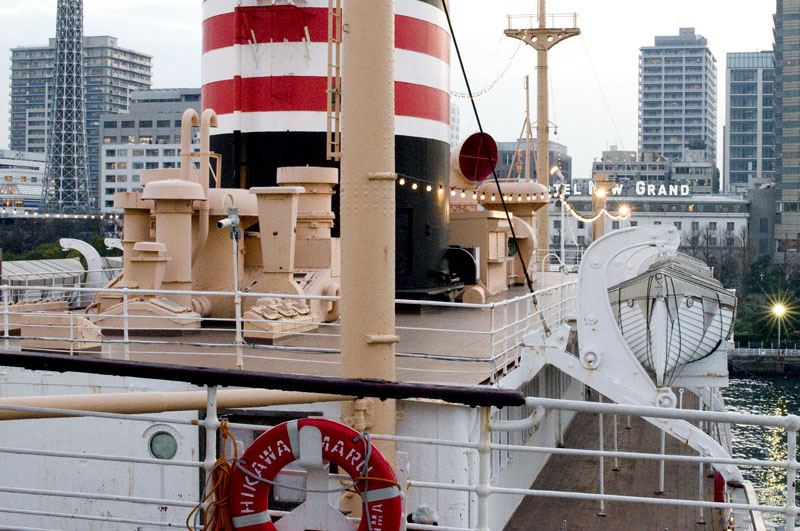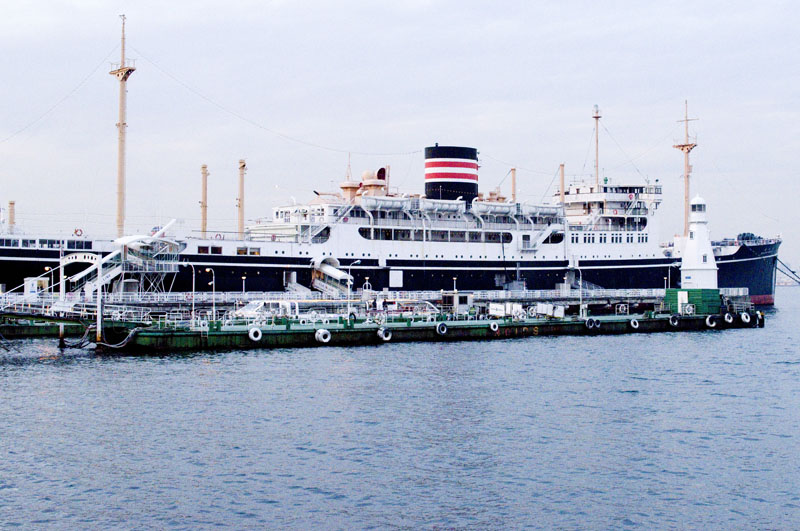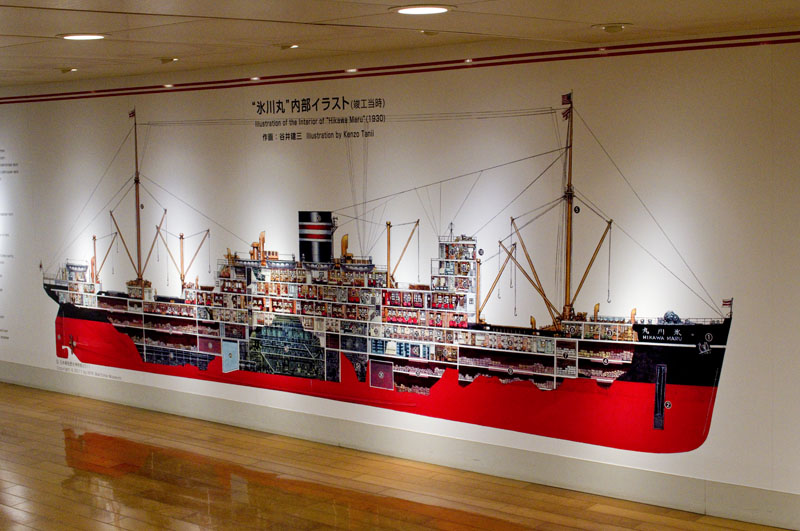
Built in Yokohama as a state-of-the-art luxury liner, the Hikaru Maru was launched in 1930 as a passenger ship traveling the route between Kobe and Seattle-Vancouver. Nowadays it's docked permanently in Yokohama Bay, where you can explore the ship and admire the beautifully preserved Art Deco-style cabins. Originally fashioned by French designer Marc Simon, the first-class areas are furnished with lovely Art Deco-style mirrors, lamps, portholes, handrails and other fixtures.
As you explore the various decks you can get an up-close look at the luxurious dining room, lounge, smoking room, children's playroom and cabins used by first-class passengers as well as the office and living quarters of the captain. It's less fancy and more utilitarian on the lower decks, where you can see the engine room, galley and a couple of third-class cabins, which are rather cramped with eight bunk beds per room.
Exhibition areas show off artifacts from various voyages and tell the story of daily shipboard life. Even during its luxury-liner days the Hikaru Maru carried quite a bit of cargo, exporting silk, tea, ceramic ware and live goldfish from Japan, and importing salmon and herring, zinc and copper, cowhide and live rabbits.
The tour includes an optional 27-minute movie (with English subtitles) that recounts the history of the ship, starting with its service as a luxury liner from 1930-40. It was then converted to a hospital ship, used to repatriate wounded Japanese soldiers during and after the war. Following that it served as a cargo ship for several years.
In 1953 it was refitted once again as a luxury liner, serving the same route from Japan to Seattle and Vancouver. All in all it crossed the Pacific 254 times, carrying around 25,000 passengers. It was finally decommissioned in 1960, and in 2016 it was designated an Important Cultural Property by the Japanese government.
The exhibits and cabins are well captioned in English and an English-language pamphlet is available. There's a lot to see, and the whole self-guided tour takes around 30-60 minutes, depending on whether you watch the introductory movie.
